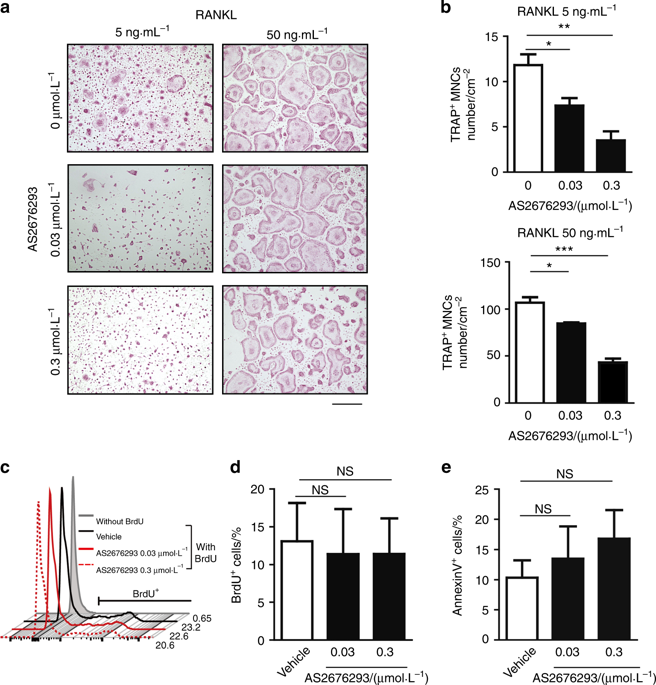Bone Research ( IF 12.7 ) Pub Date : 2019-01-03 , DOI: 10.1038/s41413-018-0036-5 Yuta Nakai , Kazuo Okamoto , Asuka Terashima , Shogo Ehata , Jun Nishida , Takeshi Imamura , Takashi Ono , Hiroshi Takayanagi

|
Bone is one of the preferred sites for the metastasis of malignant tumours, such as breast cancer, lung cancer and malignant melanoma. Tumour cells colonizing bone have the capacity to induce the expression of receptor activator of nuclear factor-κB ligand (RANKL), which promotes osteoclast differentiation and activation. Tumour-induced osteoclastic bone resorption leads to a vicious cycle between tumours and bone cells that fuels osteolytic tumour growth, causing bone pain and hypercalcaemia. Furthermore, RANKL contributes to bone metastasis by acting as a chemoattractant to bone for tumour cells that express its receptor, RANK. Thus inhibition of the RANKL–RANK pathway is a promising treatment for bone metastasis, and a human monoclonal anti-RANKL antibody, denosumab, has been used in the clinic. However, orally available drugs targeting RANKL must be developed to increase the therapeutic benefits to patients. Here we report the efficacy of the small-molecule RANKL inhibitor AS2676293 in treating bone metastasis using mouse models. Oral administration of AS2676293 markedly inhibited bone metastasis of human breast cancer cells MDA-MB-231-5a-D-Luc2 as well as tumour-induced osteolysis. AS2676293 suppressed RANKL-mediated tumour migration in the transwell assay and inhibited bone metastasis of the murine cell line B16F10, which is known not to trigger osteoclast activation. Based on the results from this study, RANKL inhibition with a small-molecule compound constitutes a promising therapeutic strategy for treating bone metastasis by inhibiting both osteoclastic bone resorption and tumour migration to bone.
中文翻译:

口服活性小分子RANKL抑制剂在骨转移中的作用
骨是恶性肿瘤如乳腺癌,肺癌和恶性黑色素瘤转移的优选部位之一。定植在骨中的肿瘤细胞具有诱导核因子-κB配体(RANKL)受体激活剂表达的能力,从而促进破骨细胞的分化和激活。肿瘤引起的破骨细胞骨吸收导致肿瘤与骨细胞之间的恶性循环,加剧了溶骨性肿瘤的生长,导致骨痛和高钙血症。此外,RANKL通过充当表达其受体RANK的肿瘤细胞的骨化学吸引剂而促进骨转移。因此,抑制RANKL–RANK途径是一种有希望的骨转移治疗方法,临床上已使用人单克隆抗RANKL抗体denosumab。然而,必须开发针对RANKL的口服药物,以增加对患者的治疗效果。在这里,我们报告使用小鼠模型的小分子RANKL抑制剂AS2676293在治疗骨转移中的功效。口服AS2676293可显着抑制人乳腺癌细胞MDA-MB-231-5a-D-Luc2的骨转移以及肿瘤引起的骨溶解。AS2676293在Transwell分析中抑制了RANKL介导的肿瘤迁移,并抑制了鼠细胞系B16F10(已知不会触发破骨细胞活化)的骨转移。根据这项研究的结果,用小分子化合物抑制RANKL构成了一种有前途的治疗策略,即通过抑制破骨细胞的骨吸收和肿瘤向骨的迁移来治疗骨转移。



























 京公网安备 11010802027423号
京公网安备 11010802027423号